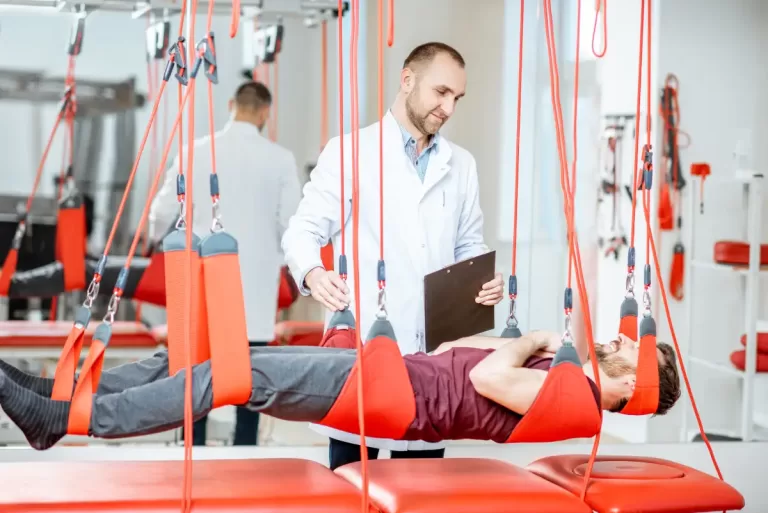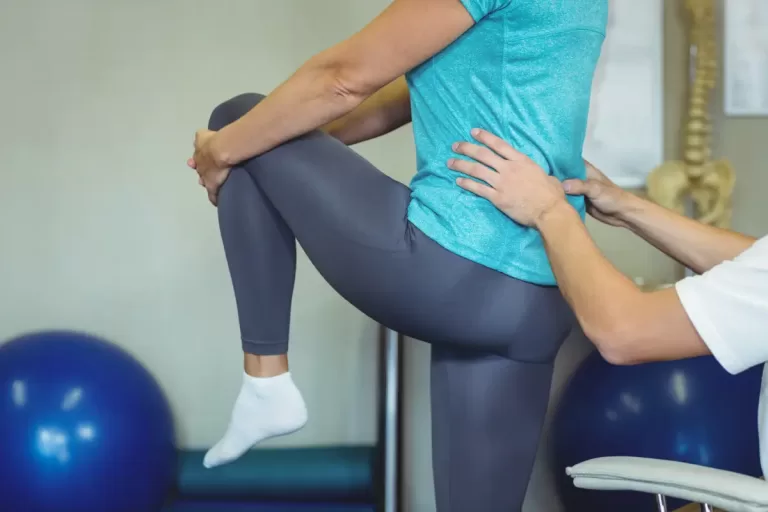Bad posture is a common issue many people struggle with, often caused by prolonged sitting, poor ergonomics, or muscle imbalances. Over time, poor posture can lead to various health problems, including back pain, neck pain, and reduced mobility. Fortunately, physical therapy can play a significant role in correcting bad posture and improving overall body alignment.
In this guide, we’ll explore how physical therapy helps correct bad posture, the techniques physical therapists use, and why improving posture is essential for your long-term health.
Why Is Good Posture Important?
Good posture is more than just sitting or standing straight—it’s about maintaining the natural alignment of your body. When your body is in proper alignment:
- Muscles and joints work more efficiently: Good posture reduces unnecessary strain on muscles, ligaments, and joints, helping them function at their best.
- Reduces pain and discomfort: Proper posture minimizes pressure on the spine and prevents issues like back pain, neck strain, and headaches.
- Improves balance and mobility: When your body is aligned correctly, it’s easier to move and maintain balance, which helps prevent falls and injuries.
- Boosts energy levels: Poor posture can lead to fatigue because your muscles have to work harder to support your body. Correcting your posture can help conserve energy.
Given these benefits, it’s clear why addressing poor posture is crucial. That’s where physical therapy comes in.
How Physical Therapy Corrects Bad Posture
Physical therapy offers a personalized approach to correcting bad posture. A physical therapist will assess your posture, identify the underlying causes, and design a treatment plan tailored to your needs. Here are some ways physical therapy helps correct posture:
1. Postural Assessment and Diagnosis
The first step in correcting bad posture is understanding the root cause. During an initial session, your physical therapist will perform a detailed postural assessment. They will observe your standing, sitting, and movement patterns to identify areas where your body is misaligned or compensating.
Common postural problems include:
- Forward head posture: The head juts forward, causing strain on the neck and shoulders.
- Rounded shoulders: The shoulders roll forward, leading to tension in the upper back and neck.
- Excessive lumbar lordosis: An exaggerated inward curve of the lower back, which can cause lower back pain.
- Kyphosis: An excessive outward curve of the upper back, leading to a hunched appearance.
After identifying the specific issues, your physical therapist will develop a treatment plan to address the misalignments.
2. Strengthening Weak Muscles
Bad posture often results from weak muscles that can no longer support proper body alignment. Physical therapy focuses on strengthening these weak muscle groups to correct imbalances. Key areas include:
- Core muscles: Strong abdominal and lower back muscles are crucial for maintaining good posture. A weak core can lead to slouching or excessive curvature in the lower back.
- Upper back and shoulder muscles: Strengthening the muscles around the shoulders and upper back helps prevent rounded shoulders and forward head posture.
- Hip muscles: The hips play a key role in maintaining posture while standing or walking. Weak hip muscles can cause the pelvis to tilt, affecting the entire body’s alignment.
Your physical therapist will guide you through targeted exercises designed to strengthen these areas and support better posture.
3. Stretching Tight Muscles
In addition to weak muscles, tight muscles are another common contributor to bad posture. Tightness in areas like the chest, shoulders, and hamstrings can pull your body out of alignment. Physical therapists use stretching techniques to help lengthen these muscles, improving flexibility and allowing your body to return to its natural posture.
Common stretches used in physical therapy for posture correction include:
- Chest stretches: To open up the chest and reduce rounded shoulders.
- Hamstring stretches: To release tension in the lower back and improve pelvic alignment.
- Neck stretches: To relieve tension from forward head posture.
Regular stretching not only improves flexibility but also helps to retrain your muscles to maintain better posture over time.
4. Postural Training and Education
One of the most valuable aspects of physical therapy is the education provided by your therapist. They will teach you how to maintain good posture throughout your daily activities, whether you’re sitting at a desk, standing, or lifting objects. This involves:
- Posture correction techniques: Your therapist will give you tips for adjusting your posture during work, rest, and exercise.
- Ergonomics: You’ll learn how to set up your workspace, including proper chair height, desk setup, and screen positioning to support good posture.
- Body mechanics: Physical therapists teach you the correct way to perform tasks such as bending, lifting, and walking to avoid straining your muscles and joints.
By becoming more aware of your posture and learning the right techniques, you can prevent bad habits from returning and maintain the progress you’ve made in therapy.
5. Manual Therapy and Hands-On Techniques
In some cases, manual therapy may be used to address misalignments, muscle tightness, or joint restrictions that are contributing to poor posture. Manual therapy includes:
- Soft tissue mobilization: A hands-on technique to relieve muscle tension and improve flexibility.
- Joint mobilization: Gentle manipulation of joints to improve their range of motion and alignment.
- Myofascial release: A technique that targets the fascia (connective tissue around muscles) to reduce tightness and improve posture.
These techniques help restore normal movement patterns, making it easier for you to maintain good posture in your daily life.
6. Balance and Stability Exercises
Maintaining good posture isn’t just about muscle strength and flexibility—it also involves balance and stability. Physical therapists often incorporate exercises that improve your balance and stability, helping you maintain proper posture without straining your muscles.
Exercises like planks, single-leg stands, and stability ball exercises train your core and stabilizer muscles to support better posture. Over time, this reduces the risk of falls, injuries, and fatigue.
Correcting bad posture through physical therapy has numerous long-term benefits for your health and well-being:
- Reduced pain: Proper posture reduces stress on your spine, muscles, and joints, alleviating chronic pain in the neck, back, and shoulders.
- Improved mobility: By addressing muscle tightness and joint restrictions, physical therapy increases your range of motion, making it easier to move freely.
- Better breathing: Correcting posture opens up your chest and allows your lungs to expand fully, improving your breathing and oxygen intake.
- Enhanced confidence: Good posture not only affects how you feel but also how you look. Standing tall with correct posture can boost your confidence and improve your overall appearance.
- Injury prevention: Strengthening and balancing your muscles helps prevent future injuries, especially during physical activities or strenuous tasks.
How Long Does It Take to Correct Posture with Physical Therapy?
The time it takes to correct bad posture varies depending on the severity of the problem and your commitment to the treatment plan. Minor posture issues can often be corrected in a few weeks with consistent effort, while more complex cases may take several months of regular therapy and practice.
The key is to stick with the exercises and habits your physical therapist recommends to achieve lasting results.
Sum Up
Physical therapy offers an effective, personalized approach to correcting bad posture. Through a combination of strengthening exercises, stretching, manual therapy, and posture education, physical therapists help restore proper body alignment, reduce pain, and improve overall function.
If you’re struggling with bad posture, working with a physical therapist can set you on the path to better health, improved mobility, and long-term relief from pain. With the right guidance, you can achieve and maintain good posture, enhancing your quality of life.







